Simon Palmer: Alan Bennett bought two of my paintings thinking they were from the 1940s and the artist was dead
However, he returned to Yorkshire forty years ago, settling in the Dales and his latest exhibition is inspired by and celebrates the beauty of the landscape in and around his Wensleydale home.
Observation of Landscape, a solo show featuring limited edition prints of original watercolour paintings, opens at the Yorkshire Sculpture Park’s YSP Centre today and features an expansive selection of his distinctive work covering the period 1993-2021.
Advertisement
Hide AdAdvertisement
Hide AdHis pictures bring vividly to life the familiar characteristics of the Dales countryside – the narrow, winding lanes, the drystone walls, railway bridges, farms and stone fences, ancient trees, furrowed fields and distant hills.
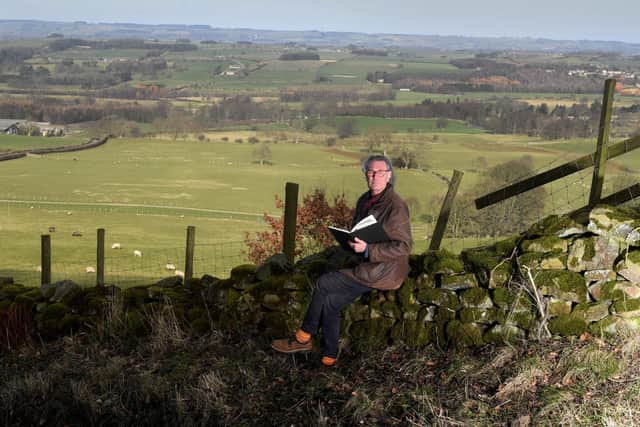

Using a subtle colour palette of greens, greys, yellows and browns, Palmer skilfully tracks the changing seasons. It is all very evocative and demonstrates a deep creative connection to the landscape.
His work hovers somewhere between the figurative and the abstract with strong repeating patterns, reflecting those he sees in the natural world around him.
“The Dales have been painted for centuries and I want to avoid cliché, so that is a big challenge – I try to do things from a different angle,” he says.
Advertisement
Hide AdAdvertisement
Hide Ad“I was brought up in the suburbs of London and coming up here to Yorkshire to visit just blew my mind. I had been painting the Kent landscape but it seemed so bland compared to the Yorkshire countryside. I went to art school in Reigate and then after that, I thought I needed to get up North.”
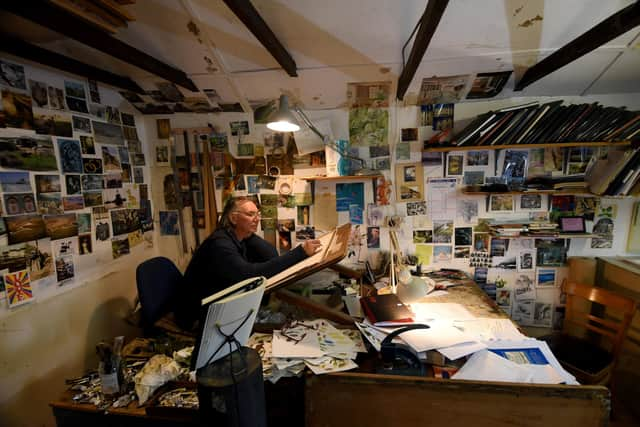

It was a trip with friends to Lastingham in Ryedale, on the edge of the North York Moors in 1976, that prompted his move – and it is one that he has not regretted.
His journeys up and down Wensleydale and his daily walks close to his home are a constant inspiration.
“I love the agricultural landscape,” he says. “I do a short walk, usually round our village, and I always take a drawing book with me and pen and ink. While I am out, I will do a quick five-minute drawing. The brain is such an extraordinary thing – within that five-minute drawing, it has absorbed so much information. And then with that I can come back to my studio and create a picture, a lot of it is done from memory. I think it is good not to draw too precisely because then you are a slave to it – I like to create my own spiritual interpretation of a place.”
Advertisement
Hide AdAdvertisement
Hide AdThere is a gently nostalgic feeling to Palmer’s images and a strong link to a British landscape painting tradition, recalling work by 20th century artists such as Eric Ravilious and Graham Sutherland.
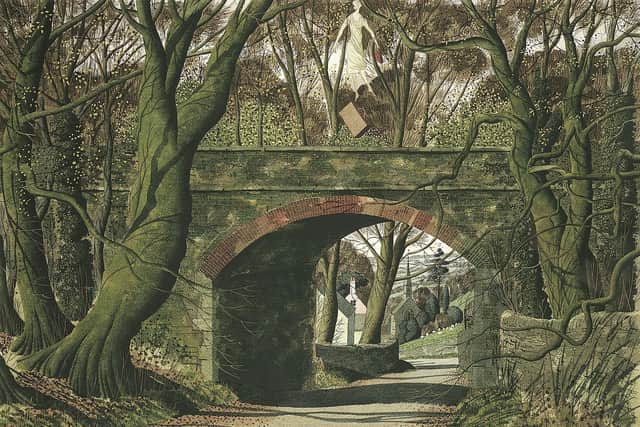

Many of his pictures look as though they could have been created during the Second World War, or in the immediate post-war period. He is aware that his pictures evoke the sense of a bygone age, but says that is not intentional.
“I don’t deliberately want my work to feel like it’s from the 1940s – the Nash brothers have been a great influence on me, as has Stanley Spencer, but I am not trying to emulate them,” he says. “I don’t want to be thought of as harking back – I am a contemporary artist, but it is just what has influenced me.”
That impression of his work being from an earlier era can work in his favour, though.
Advertisement
Hide AdAdvertisement
Hide Ad“Alan Bennett tells a lovely story – he bought two little watercolours of mine and he said that he thought they would be a good investment because he assumed they must have been painted in the 1940s and the artist was dead,” he says. “I suppose I have a trademark style which can be useful because people recognise your work but I sometimes envy those free expressionist artists – I have never done that; I think it is because I initially trained as a book illustrator.”
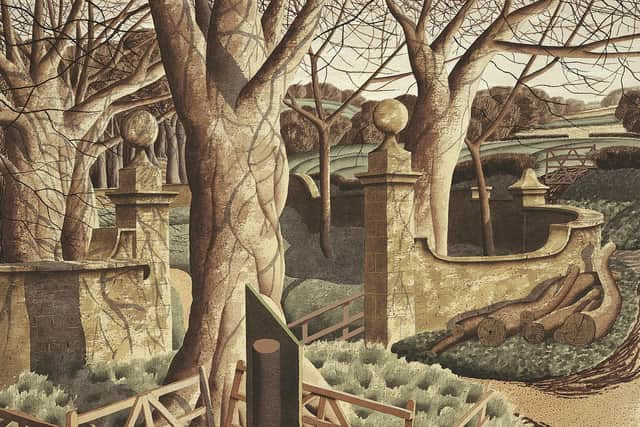

It was one of his tutors at art college who suggested that he try painting landscapes. “I always turned up at college early – I was just so happy to be there, I was a bit of a model student and this one teacher, who was loyal to me and supported me until his death, told me I should be painting landscapes.”
He says that landscapes were the kind of painting he was drawn to right from the start of his career, but other factors came into play – such as commercial viability. “I had been yearning to do landscapes really, ever since leaving college but I had to make a living.”
Once he had established himself, however, he was able to devote more of his creative practice to what was clearly a first and enduring love.
Advertisement
Hide AdAdvertisement
Hide AdA few of the earlier works in the exhibition feature figures in the landscape and are reminiscent of the work of the Dutch and Flemish Renaissance painter and printmaker Pieter Brueghel, creator of the famous 1565 painting Hunters in the Snow.
“Some people prefer those 1990s pictures because they are perhaps more allegorical and seem to tell more of a story,” says Palmer. “I did have a bit of a Bruegelesque period and I enjoyed doing that but I wanted to move on – you have to keep looking forward.”
And he is continuing to develop and hone his craft. “People often ask me ‘how long does it take you to do a picture?’ and I say 40 years. My work has changed in that time but you can still tell it’s my work.
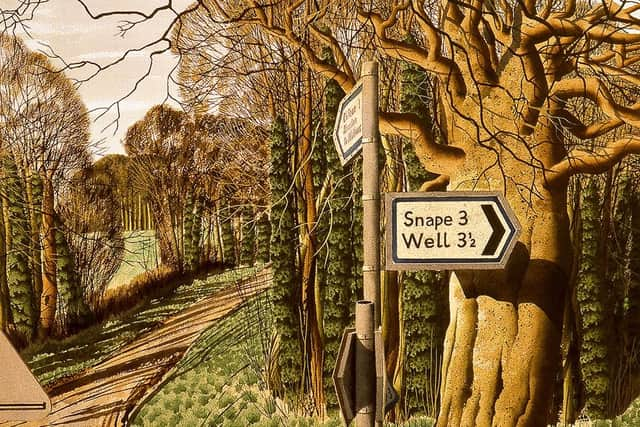

"There is something almost like a trademark and it is useful to have that if you want to leave a legacy or have a reasonably long career. It is not calculating – it is just a kind of evolution, really.”
Simon Palmer: Observation of Landscape, Yorkshire Sculpture Park YSP Centre, March 4-June 11, ysp.org.uk